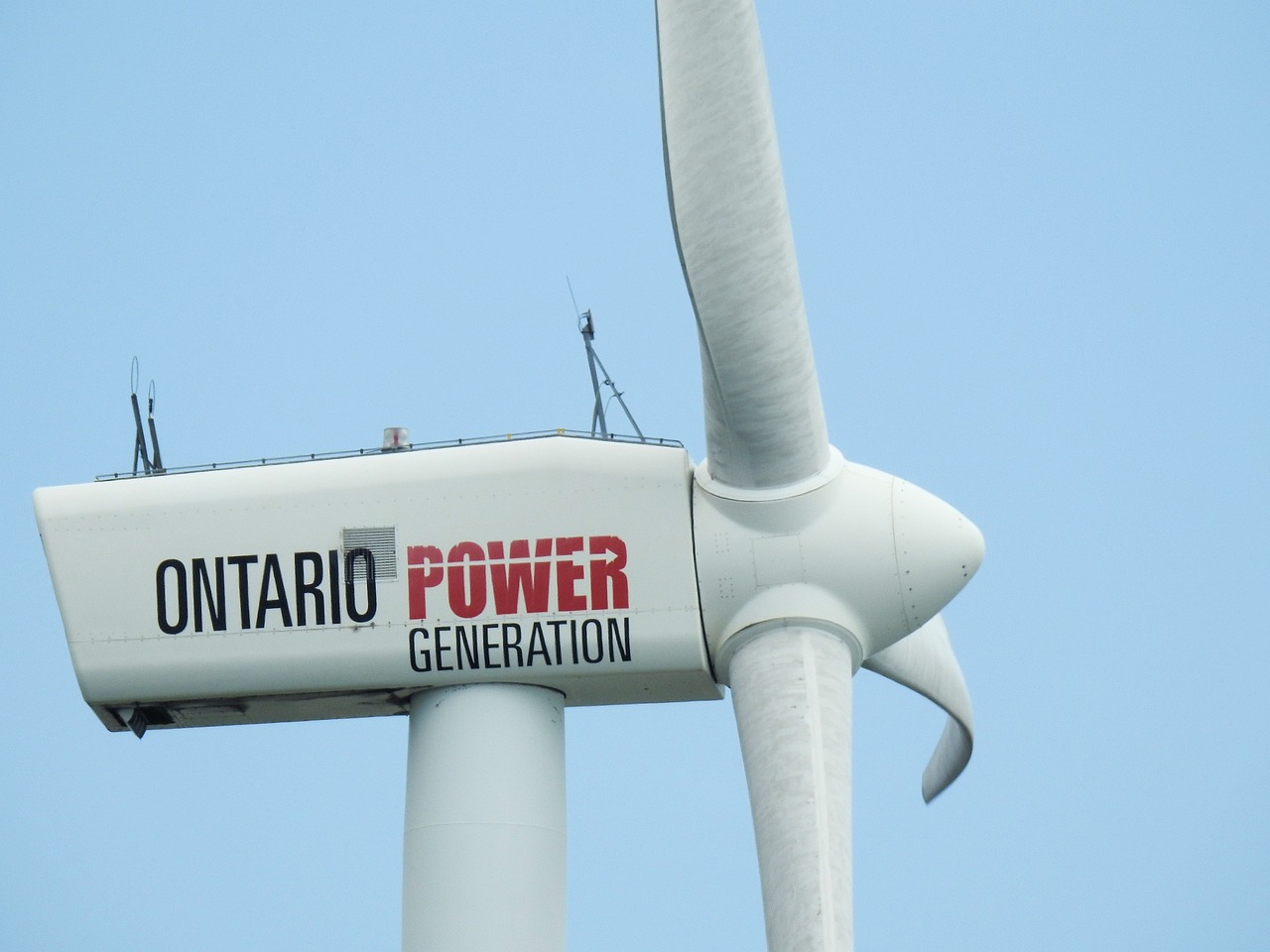This article explores the current economic landscape of West Bengal, analyzing growth trends, challenges, and future prospects. It aims to provide comprehensive insights for policymakers, investors, and residents.
Current Economic Landscape of West Bengal
West Bengal’s economy has demonstrated remarkable resilience despite various challenges. The state’s GDP growth has been steady, driven by diverse sectors. Key economic indicators such as employment rates, investment inflow, and industrial output paint a positive picture of the current status.
Key Industries Contributing to Growth
Several industries play a crucial role in West Bengal’s economy. The major sectors include:
- Agriculture
- Manufacturing
- Information Technology (IT)
Agriculture: Backbone of the Economy
Agriculture continues to be a significant pillar of West Bengal’s economy. The state’s agricultural output includes key crops such as rice and jute, which are vital for both local consumption and export.
Challenges in the Agricultural Sector
While agriculture is strong, it faces challenges including climate change, land degradation, and the urgent need for modernization in farming techniques. Addressing these issues is essential for sustainable growth.
Manufacturing and Industrial Growth
The manufacturing sector is vital for job creation and economic stability. Industries such as textiles, engineering, and chemicals have seen substantial growth, contributing to the state’s economic dynamism.
Emerging Sectors: IT and Services
The IT and services sectors are rapidly expanding in West Bengal. The growth of tech companies and the impact of digitalization are transforming the economic landscape, creating new job opportunities and enhancing productivity.
Government Initiatives for Economic Development
Government policies significantly influence economic growth. Initiatives aimed at boosting investment and enhancing infrastructure development are crucial for attracting both domestic and foreign investments.
Challenges Facing West Bengal’s Economy
Despite positive growth, West Bengal faces challenges such as unemployment, infrastructure deficits, and bureaucratic hurdles that could hinder progress. Addressing these challenges is vital for the state’s future economic health.
Future Prospects: What Lies Ahead for West Bengal?
Looking forward, the economic trajectory of West Bengal appears promising. With strategic recommendations focused on sustainable development, the state can unlock its full potential and enhance the quality of life for its residents.

Current Economic Landscape of West Bengal
West Bengal’s economy has demonstrated remarkable resilience in the face of numerous challenges. This state, rich in cultural heritage and resources, is experiencing a transformative phase, marked by significant growth across various sectors. The analysis of the current economic landscape reveals the driving forces behind this growth and the indicators that paint a picture of the state’s economic health.
One of the key indicators of West Bengal’s economic performance is its Gross State Domestic Product (GSDP), which has shown consistent growth over the past few years. The state has diversified its economic portfolio, moving beyond traditional sectors to embrace new opportunities. This diversification is essential in mitigating risks associated with economic fluctuations.
Several sectors are pivotal to West Bengal’s economic growth:
- Agriculture: The backbone of the economy, contributing significantly to employment and food security.
- Manufacturing: A vital component, particularly in textiles, engineering, and chemicals.
- Information Technology: Rapidly emerging as a key player, with numerous tech startups establishing a presence in the state.
Despite the positive trends, West Bengal faces challenges that could hinder its growth trajectory. Issues such as infrastructure deficits, bureaucratic hurdles, and unemployment must be addressed to sustain momentum. The government is actively working on initiatives to improve infrastructure and create a more business-friendly environment.
In conclusion, West Bengal’s economy is on a promising path, driven by key sectors and supported by strategic government initiatives. With continued focus on overcoming challenges, the state is poised for sustainable growth and development in the coming years.

Key Industries Contributing to Growth
West Bengal’s economy is diverse and vibrant, with several key industries that significantly contribute to its growth and employment opportunities. Understanding these sectors is essential for grasping the overall economic landscape of the state.
- Agriculture: The backbone of West Bengal’s economy, agriculture employs a substantial portion of the workforce. The state is renowned for its production of rice and jute, which are not only vital for local consumption but also have a significant presence in national and international markets. The agricultural sector is bolstered by a variety of crops, including potatoes, tea, and fruits, ensuring food security and economic stability.
- Manufacturing: The manufacturing industry in West Bengal is crucial for job creation and economic development. Key sub-sectors include textiles, engineering, and chemicals. The textile industry, in particular, has a rich heritage in the state, with numerous mills and factories producing garments for both domestic and international markets. The engineering sector is also expanding, driven by the demand for machinery and equipment.
- Information Technology (IT): The IT sector is one of the fastest-growing industries in West Bengal. With cities like Kolkata emerging as tech hubs, numerous startups and established companies are setting up operations in the region. This growth is fueled by a skilled workforce and supportive government policies aimed at fostering innovation and digital transformation.
- Tourism: Tourism is another vital industry, contributing significantly to the state’s GDP. West Bengal’s rich cultural heritage, historical sites, and natural beauty attract millions of visitors each year. The tourism sector creates jobs in hospitality, travel, and local crafts, enhancing the overall economic landscape.
In conclusion, the diverse industrial landscape of West Bengal is pivotal for its economic growth. By focusing on enhancing these key sectors, the state can continue to create employment opportunities and improve the quality of life for its residents.
Agriculture: Backbone of the Economy
Agriculture is not just a sector; it is the very lifeblood of West Bengal’s economy. With its rich soil and favorable climate, the state has established itself as a powerhouse in agricultural production. This article delves into the various aspects of agriculture in West Bengal, including its output, key crops, and the indispensable role of farmers in driving economic growth.
West Bengal boasts a diverse agricultural landscape, producing a variety of crops that contribute significantly to both the local and national economy. The state’s agricultural output is primarily driven by staple crops such as rice, which is the most important food crop, and jute, known as the ‘golden fiber’ for its economic value. Additionally, the state is a major producer of vegetables and fruits, which are crucial for both domestic consumption and export.
Farmers in West Bengal play a crucial role in sustaining this economic growth. They not only provide food for the population but also contribute to the state’s GDP through their agricultural activities. The government has recognized the importance of this sector and has implemented various initiatives to support farmers, including subsidies, training programs, and improved access to markets.
However, the agricultural sector is not without its challenges. Issues such as climate change, land degradation, and the need for modernization in farming techniques pose significant threats to productivity. To address these challenges, there is a pressing need for innovative solutions that can enhance resilience and sustainability within the agricultural framework.
In conclusion, agriculture remains the backbone of West Bengal’s economy, providing essential resources and employment opportunities. As the state navigates through challenges, the focus on supporting farmers and adopting sustainable practices will be key to ensuring continued economic growth and food security for the future.
Rice and Jute Production
West Bengal stands out as a premier agricultural state in India, particularly renowned for its production of rice and jute. These two crops not only form the backbone of the state’s agricultural sector but also significantly contribute to its overall economy. This section delves into the cultivation practices, market trends, and the economic significance of rice and jute production in West Bengal.
| Crop | Area Cultivated (in million hectares) | Annual Production (in million tons) |
|---|---|---|
| Rice | 4.5 | 15.5 |
| Jute | 0.7 | 1.5 |
The state’s climate, characterized by its monsoon rains and fertile alluvial soil, creates ideal conditions for rice cultivation. Farmers employ a variety of techniques, including transplanting and direct seeding, to optimize yield. Moreover, the introduction of high-yield varieties and improved irrigation practices has led to a significant boost in productivity over the years.
On the other hand, jute, often referred to as the golden fiber, is another critical crop for West Bengal. It is primarily grown in the southwestern districts of the state. The cultivation of jute not only supports the local economy but also plays a vital role in providing employment to millions of farmers and laborers. The jute industry is pivotal for the manufacturing sector, producing a range of products from bags to textiles.
In recent years, the market trends for both rice and jute have shown fluctuations due to various factors such as global demand, climate change, and government policies. Understanding these trends is crucial for stakeholders, including farmers, traders, and policymakers, to make informed decisions. With the right support and investment, West Bengal can further enhance its position as a leading producer of these essential crops.
Challenges in the Agricultural Sector
Agriculture is often hailed as the backbone of many economies, including that of West Bengal. However, despite its critical importance, this sector is currently grappling with a myriad of challenges that threaten its sustainability and growth. This section delves into the pressing issues faced by agriculture, including climate change, land degradation, and the urgent need for modernization in farming techniques.
- Climate Change: The agricultural sector is highly vulnerable to the impacts of climate change. Erratic weather patterns, increased temperatures, and unpredictable rainfall can drastically affect crop yields. Farmers are often left to contend with droughts or floods, which can lead to reduced productivity and increased food insecurity.
- Land Degradation: Over time, intensive farming practices have led to significant land degradation. Soil erosion, nutrient depletion, and contamination from pesticides and fertilizers compromise the land’s ability to produce healthy crops. This degradation not only affects current agricultural output but also poses a risk to future generations.
- Modernization Needs: Many farmers still rely on traditional farming techniques that are often inefficient and outdated. The lack of access to modern technology, such as precision agriculture tools and high-yield crop varieties, limits productivity. There is a pressing need for investment in research and development to modernize agricultural practices and improve yields.
To overcome these challenges, it is essential for stakeholders—governments, agricultural organizations, and farmers—to collaborate on innovative solutions. Implementing sustainable farming practices, investing in technology, and enhancing education and resources for farmers are vital steps toward ensuring the resilience of the agricultural sector in West Bengal.
In conclusion, while agriculture remains a fundamental pillar of West Bengal’s economy, addressing the challenges it faces is crucial for sustainable growth. By prioritizing climate resilience, land conservation, and modernization, the state can secure a prosperous agricultural future.
Manufacturing and Industrial Growth
The manufacturing sector plays a crucial role in the economic landscape of West Bengal, serving as a significant driver for job creation and overall economic stability. This section will examine the growth and development of key industries, including textiles, engineering, and chemicals, which collectively contribute to the state’s industrial growth.
West Bengal has a rich history in manufacturing, particularly in the textile industry. The state is renowned for its production of jute and cotton textiles, which have been a staple of the local economy for decades. The jute industry, in particular, not only provides employment to thousands but also plays a vital role in exports, making West Bengal a leader in jute production in India. The textile sector has seen innovations in production techniques, which have enhanced productivity and quality, thereby increasing competitiveness in both domestic and international markets.
Another significant component of West Bengal’s manufacturing sector is engineering. The state boasts a robust engineering base, with numerous factories specializing in the production of machinery, tools, and equipment. This sector has attracted substantial investments, leading to the establishment of modern manufacturing facilities that adhere to international standards. The engineering industry not only creates jobs but also fosters technological advancement, contributing to the overall skill development of the workforce.
The chemical industry in West Bengal is also noteworthy, with a diverse range of products, including pharmaceuticals, agrochemicals, and specialty chemicals. This sector has witnessed considerable growth due to the increasing demand for chemical products both domestically and globally. The government has implemented various policies to support the chemical industry, encouraging investments and facilitating research and development.
In conclusion, the manufacturing sector in West Bengal is vital for the state’s economic growth and job creation. The continued development of industries such as textiles, engineering, and chemicals will not only enhance the state’s economic prospects but also improve the livelihoods of its residents. As West Bengal navigates the challenges and opportunities ahead, a focus on innovation and sustainability in manufacturing will be essential for long-term success.

Emerging Sectors: IT and Services
The IT and services sectors in West Bengal are experiencing remarkable growth, positioning the state as a hub for technological innovation and digital transformation. This growth is not only reshaping the economic landscape but also creating new opportunities for employment and investment.
In recent years, a significant number of tech companies have established their presence in West Bengal, particularly in cities like Kolkata and Siliguri. These companies are not only contributing to the local economy but are also attracting talent from across the country. The rise of startups and established tech giants alike has led to an increase in demand for skilled professionals, further enhancing the region’s reputation as a technology center.
Digitalization has become a driving force behind this expansion. As businesses across various sectors adopt digital tools and technologies, the need for IT services has surged. This trend is evident in various industries, including healthcare, finance, and education, where digital solutions are streamlining operations and improving service delivery.
Moreover, the government’s initiatives aimed at promoting the IT sector have played a crucial role in this growth. Policies that support infrastructure development, tax incentives for tech startups, and investment in skill development programs are fostering a conducive environment for innovation. These efforts are essential for ensuring that the workforce is equipped with the necessary skills to thrive in a rapidly evolving digital landscape.
As we look to the future, the potential for further growth in the IT and services sectors remains promising. With continued investment and support, West Bengal is set to become a leading player in the global technology arena, driving economic growth and providing new opportunities for its residents.
Government Initiatives for Economic Development
Government policies are instrumental in steering the economic trajectory of any region. In West Bengal, a series of targeted initiatives have been launched to stimulate investment and enhance infrastructure development, which are crucial for sustainable economic growth. This section outlines some of the key initiatives currently in place.
- West Bengal Industrial Development Corporation (WBIDC): The WBIDC plays a pivotal role in promoting industrialization by facilitating investment opportunities and providing support to entrepreneurs. The corporation offers various incentives, including financial assistance and streamlined processes for obtaining necessary permits.
- Single Window Clearance System: To simplify the approval process for new projects, the state government has implemented a single-window clearance system. This initiative aims to reduce bureaucratic hurdles and ensure that investors can start their businesses with minimal delays.
- Infrastructure Development Schemes: Recognizing the need for robust infrastructure, the government has initiated several projects focused on improving transportation, energy supply, and urban development. The Kolkata Metro Rail Project is a notable example, enhancing connectivity and reducing congestion in the capital city.
- Skill Development Programs: To address the skills gap in the labor market, the government has launched various skill development initiatives aimed at equipping the workforce with the necessary skills for emerging industries. This is vital for attracting investments in sectors such as IT and manufacturing.
- Promotion of Startups: The state has also introduced policies to foster entrepreneurship through financial support and mentorship programs for startups. This initiative encourages innovation and the creation of new businesses, contributing to job creation and economic diversification.
These initiatives reflect the government’s commitment to creating a conducive environment for business and investment. By focusing on infrastructure and skill development, West Bengal aims to enhance its appeal as a prime destination for both domestic and foreign investors.
Investment Opportunities in West Bengal
West Bengal is emerging as a prominent destination for investment, attracting both foreign and domestic investors. The state’s strategic location, rich cultural heritage, and skilled workforce create a conducive environment for various sectors to flourish. This section explores the key areas that present lucrative opportunities for investors.
- Information Technology (IT): With a rapidly growing IT sector, West Bengal is home to numerous tech parks and startups. The state government has implemented policies to promote innovation and digital transformation, making it an attractive hub for IT companies.
- Manufacturing: The manufacturing sector, particularly in textiles and engineering, is witnessing significant growth. Investors can benefit from the state’s focus on enhancing industrial infrastructure and creating a skilled labor force.
- Agriculture and Food Processing: West Bengal’s agricultural output is substantial, with key products like rice and jute. The food processing industry is gaining traction, offering opportunities for investment in processing units and supply chain development.
- Tourism: The state’s rich cultural diversity and natural beauty make it a prime location for tourism. Investments in hospitality and travel services can yield high returns as the tourism sector expands.
- Renewable Energy: With a global shift towards sustainability, West Bengal is focusing on renewable energy sources. Investors can explore opportunities in solar and wind energy projects, aligning with the state’s commitment to environmental sustainability.
The potential returns for investors in West Bengal are promising, driven by the state’s economic resilience and proactive government initiatives. By capitalizing on these opportunities, investors can contribute to the state’s growth while achieving substantial financial gains.

Challenges Facing West Bengal’s Economy
Despite the significant economic growth West Bengal has experienced in recent years, the state grapples with a multitude of challenges that threaten to hinder its progress. This section provides an in-depth analysis of the critical issues, including unemployment, infrastructure deficits, and bureaucratic hurdles, which pose substantial obstacles to sustained economic development.
- Unemployment: A Growing Concern
The unemployment rate in West Bengal remains a pressing issue. With a large population, the demand for jobs far exceeds the available opportunities. Many young individuals struggle to find work that matches their skills, leading to a significant talent drain. To combat this, there is a crucial need for skill development programs that align with industry requirements, enhancing employability and fostering economic growth.
- Infrastructure Deficits: A Barrier to Growth
Infrastructure plays a vital role in facilitating economic activities. However, West Bengal faces considerable infrastructure deficits, particularly in transportation and utilities. The lack of modern roads, efficient public transport, and reliable power supply hampers industrial growth and deters potential investors. Addressing these deficits through targeted investments and strategic planning is essential for unlocking the state’s full economic potential.
- Bureaucratic Hurdles: Navigating Red Tape
Bureaucratic inefficiencies can significantly impede business operations and economic progress. Complex regulatory frameworks and lengthy approval processes create an environment that is often challenging for both local and foreign investors. Streamlining these processes and promoting a more business-friendly atmosphere will be crucial in attracting investments and fostering entrepreneurship.
In conclusion, while West Bengal’s economic growth is commendable, overcoming these challenges is imperative for ensuring sustainable development. By focusing on employment generation, infrastructure improvement, and bureaucratic reform, the state can pave the way for a more prosperous future.
Unemployment and Skill Development
Unemployment continues to be a significant challenge in West Bengal, posing risks not just to economic stability but also to social cohesion. The need for skill development programs is more urgent than ever, as they play a crucial role in enhancing employability and aligning the workforce with the demands of various industries. As the job market evolves, it is imperative that individuals possess the skills that employers are actively seeking.
To effectively address unemployment, it is essential to implement comprehensive skill development initiatives. These programs should focus on both technical skills and soft skills, enabling job seekers to adapt to the rapidly changing job landscape. For instance, sectors such as Information Technology, healthcare, and manufacturing are experiencing a surge in demand for skilled workers. By equipping individuals with relevant skills in these areas, we can significantly reduce unemployment rates.
Moreover, collaboration between educational institutions, government bodies, and the private sector is crucial. Such partnerships can facilitate the development of tailored training programs that meet the specific needs of local industries. For example, internships and apprenticeships can provide hands-on experience, making participants more attractive to potential employers.
In addition to technical training, it is vital to incorporate entrepreneurship education into skill development programs. Encouraging individuals to start their own businesses can create new job opportunities and stimulate economic growth. By fostering an entrepreneurial spirit, we not only empower individuals but also contribute to the overall economic resilience of West Bengal.
In conclusion, addressing unemployment through targeted skill development programs is essential for the future of West Bengal’s economy. By investing in the workforce and ensuring that individuals are equipped with the necessary skills, we can enhance employability, meet industry demands, and ultimately pave the way for sustainable economic growth.
Infrastructure Development Needs
Infrastructure is a critical component for fostering economic growth, particularly in a diverse and populous state like West Bengal. The current state of infrastructure in West Bengal presents both challenges and opportunities that must be addressed to ensure sustainable development.
As of now, West Bengal’s infrastructure, including transportation, energy, and communication systems, is inadequate to support the state’s growing economic demands. The transportation network, which includes roads, railways, and ports, is in need of significant upgrades. For instance:
- Roads: Many rural and urban roads are in poor condition, affecting connectivity and logistics.
- Railways: While extensive, the railway system often suffers from delays and overcrowding, impacting passenger and freight transport.
- Ports: The state’s ports require modernization to handle increasing trade volumes efficiently.
Moreover, the energy sector faces challenges with supply and reliability. Many areas experience frequent power outages, which hinder industrial productivity. Investments in renewable energy sources could provide a sustainable solution to these issues.
In the realm of communication infrastructure, there is a pressing need for enhanced internet connectivity, especially in rural regions. This improvement is essential for supporting the burgeoning IT sector and ensuring that all citizens have access to digital resources.
To address these infrastructure deficits, the government and private sector must collaborate on comprehensive planning and investment strategies. This includes:
- Public-Private Partnerships (PPPs): Encouraging joint ventures can leverage private expertise and funding.
- Government Initiatives: Streamlining regulations and providing incentives for infrastructure projects.
- Community Engagement: Involving local communities in planning can ensure that infrastructure projects meet actual needs.
In conclusion, investing in infrastructure is not just a necessity but a strategic imperative for West Bengal’s economic future. By addressing these infrastructure development needs, the state can unlock its full potential and pave the way for sustainable growth.

Future Prospects: What Lies Ahead for West Bengal?
As we look towards the future, West Bengal’s economic landscape is poised for significant transformation. With a wealth of resources, strategic location, and a vibrant workforce, the state is on the brink of harnessing new opportunities for growth. This section outlines potential areas for expansion and offers strategic recommendations that can pave the way for sustainable development in West Bengal.
1. Renewable Energy Initiatives
With an increasing focus on sustainability, West Bengal can capitalize on renewable energy sources such as solar and wind energy. By investing in infrastructure and technology, the state can reduce its carbon footprint and create new jobs in the green energy sector.
2. Enhancing Agricultural Productivity
West Bengal’s agricultural sector is ripe for modernization. Implementing advanced farming techniques, along with the use of technology in agriculture, can significantly boost productivity. Initiatives aimed at supporting farmers through training and access to modern equipment will ensure food security and economic stability.
3. Infrastructure Development
To support economic growth, substantial investment in infrastructure is essential. Upgrading roads, ports, and digital connectivity will facilitate trade and attract investment. The government should prioritize public-private partnerships to mobilize resources for these projects.
4. Fostering IT and Innovation
The IT sector in West Bengal has shown remarkable growth. Encouraging innovation hubs and tech parks can attract startups and established companies alike. Providing incentives for research and development will further enhance the state’s reputation as a tech hub.
5. Skill Development Programs
Addressing the unemployment challenge requires a robust approach to skill development. Collaborating with industries to create targeted training programs can equip the workforce with the necessary skills to meet the demands of emerging sectors.
In conclusion, West Bengal’s future is bright, with numerous avenues for economic advancement. By focusing on renewable energy, enhancing agricultural practices, improving infrastructure, fostering innovation, and investing in skill development, the state can achieve sustainable growth and improve the quality of life for its residents.
Frequently Asked Questions
- What are the key industries driving West Bengal’s economy?
The economy of West Bengal is primarily driven by sectors such as agriculture, manufacturing, and IT. Agriculture, particularly rice and jute production, plays a significant role, while manufacturing includes textiles and engineering. The burgeoning IT sector is also contributing to economic growth.
- What challenges does West Bengal face in its economic development?
West Bengal faces several challenges, including high unemployment rates, inadequate infrastructure, and bureaucratic hurdles. These issues can hinder growth and make it difficult for businesses to thrive, emphasizing the need for targeted skill development and infrastructure improvements.
- What government initiatives are in place to boost economic growth?
The government of West Bengal has implemented various initiatives to enhance investment and infrastructure development. These include policies aimed at attracting foreign investments, improving business conditions, and promoting skill development programs to meet industry demands.
- Are there investment opportunities in West Bengal?
Absolutely! West Bengal offers a range of investment opportunities across sectors like agriculture, manufacturing, and IT. The state’s strategic location and government support make it an attractive destination for both domestic and foreign investors seeking potential returns.
- What is the future economic outlook for West Bengal?
The future of West Bengal’s economy looks promising, with potential growth areas identified in emerging sectors like IT and services. Strategic recommendations for sustainable development suggest that with the right investments and policies, the state can continue to thrive economically.


























































